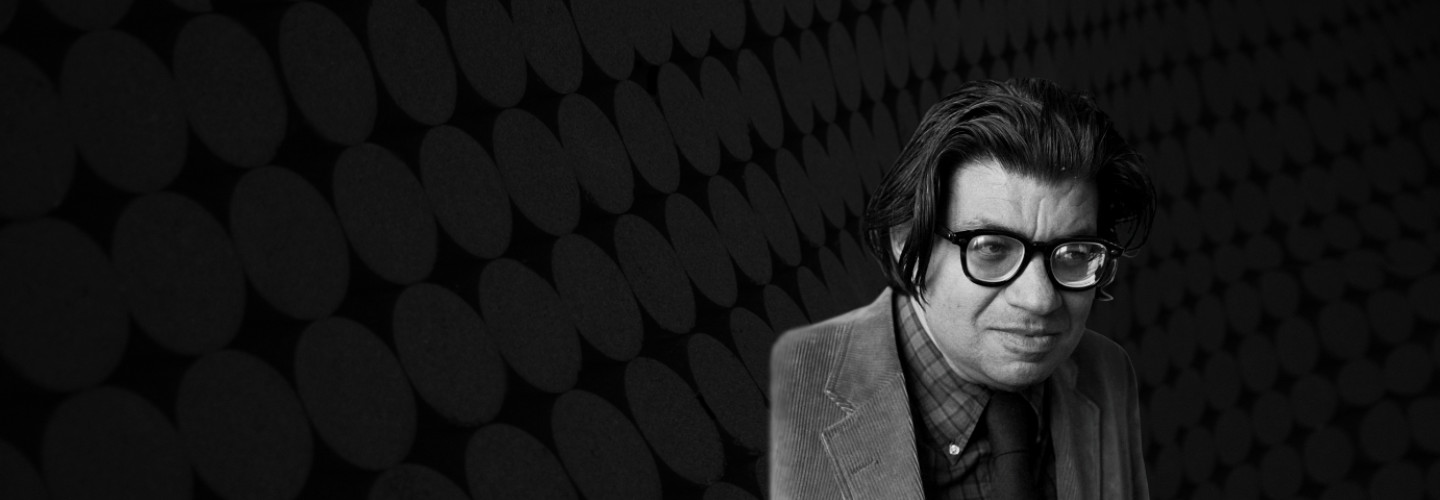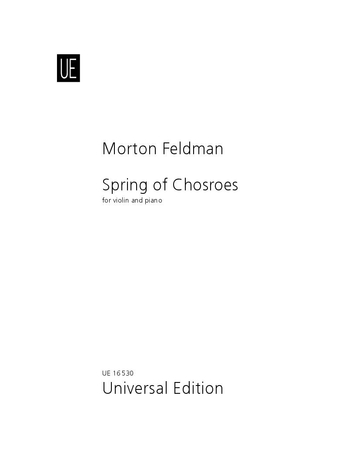

Morton Feldman
Spring of Chosroes
Duration: 12'
Dedication: for Paul Zukofsky
Instrumentation details:
violin
piano
Feldman - Spring of Chosroes for violin and piano
Translation, reprints and more

Morton Feldman
Feldman: Spring of Chosroes for violin and pianoOrchestration: for violin and piano
Type: Noten
Audio preview
Work introduction
The Spring of Chosroes was a sumptuous carpet reputed to have been made for the Sassanian King Chosroes I (in the sixth century AO). Woven with silk, gold, silver and rare stones, the carpet depicted a garden akin to Paradise. The image of this legendary rug remained with Feldman throughout the composition, inspiring the isolated "gems" of sound, the translucent, interwoven harmonic timbres, and suggesting the form of the work.
From the onset, the Spring of Chosroes confronts us, not with the traditional violin/piano exchange, but with two separate yet integral monologues. The continuous repetition of the piano's opening two chords forms a ground around which the disparate violin weaves an image of pizzicato sounds and bowed harmonics. Both the instruments' dissimilar pacing and their harmonic and registral differences combine to produce the image of two separate lines moving parallel through time, but at moments these “uncompromising" instruments exchange like material. In these moments of self[-] conscious détente, Feldman exposes the various degrees of their compatibility.
Feldman has taken these most complementary instruments and held each apart, examining one, then the other. It is Feldman's ear which reveals the form – scanning as an eye would scan a carpet – first a close focus on one pattern, then on another; then a wide-angle view of two patterns at once. The nature of these instruments' interaction becomes elusive. Even when one instrument plays alone, we do not get the customary impression that the other is waiting to reply. Rather, Feldman is choosing to turn an ear to one instrument, then to the other; and at times we hear both together. It is through this selective listening that Feldman paces the unfolding dialogue.
The violin and piano are held together by a tightly-knit pitch-world. Both their harmonic and melodic sound-palettes are constructed from three pitches a half-step apart (such as the violin's opening D#, E, F) with the occasional harmonic colouring of the tritone and/or perfect intervals. Using the resultant dichotomy between the dissonant half-steps and the consonant perfect intervals, Feldman creates the parallel impression of distance and intimacy between the violin and piano.
Even though both instruments explore a full range of their technical possibilities, the listener is nevertheless left with the suggestion of two instruments quite immobilized, self-contained, and distant. The violin is constricted, breathless; always too short, too sad, too remote. Never is heard the full, exalted sound that the violin has immortalized; here a double-stop is the warmest sound. The piano has abandoned its traditional function of articulating or interpreting the action. This scenario succeeds because it is enacted on the same surface. Feldman has flattened the three-dimensional questions/answer exchange into two dimensions whose frozen imagery is suspended in an eerie equilibrium not unlike the figures of a Piero della Francesco fresco. The instruments have that same sober inner life; one not exposed through the same musical expressions, but explored through an allusive series of glances and innate gestures.
The Spring of Chosroes, a commission by the McKim Fund in the Library of Congress, was composed in 1977. It is dedicated to Paul Zukofsky, and was first performed by Paul Zukofsky and Ursula Oppens.
Bunita Marcus
